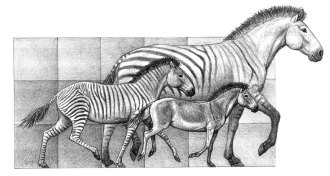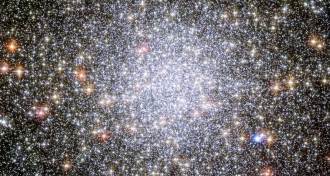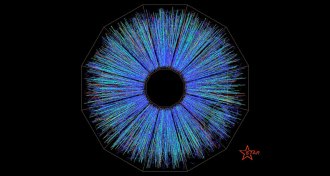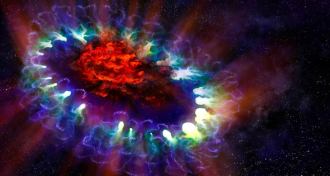Uncategorized
-
 Life
LifeHorses buck evolutionary ideas
Horse evolution doesn’t fit classic scenario of trait evolution.
-
 Life
LifeMalaria molecule makes blood extra-alluring to mosquitoes
Scientists have identified a molecule that draws mosquitoes to malaria-infected blood.
-
 Animals
AnimalsYoung penguins follow false food cues
Juvenile African penguins are being trapped in barren habitats, led astray by biological cues that are no longer reliable because of human activity.
-
 Materials Science
Materials ScienceGermanium computer chips gain ground on silicon — again
Having pushed silicon to its limit, engineers are turning back to germanium.
-
 Animals
AnimalsHow hydras know where to regrow their heads
Regenerating pond animals called hydras inherit structural patterns from their original forms, researchers find.
-
 Genetics
GeneticsNumber of species depends how you count them
Genetic evidence alone may overestimate numbers of species, researchers warn.
-
 Ecosystems
EcosystemsZika virus ‘spillback’ into primates raises risk of future human outbreaks
Spillback of Zika virus into monkeys may complicate eradication efforts.
-
 Astronomy
AstronomyMiddling black hole may be hiding in star cluster
A black hole with about 2,200 times the mass of the sun has been detected. If confirmed, it could represent a new type of gas-starved black holes and hint at how supermassive ones may form.
-
 Astronomy
AstronomySupernova story continues, just like science journalism
Acting Editor in Chief Elizabeth Quill discusses science's enduring legacy and that of Science News.
-
 Health & Medicine
Health & MedicineReaders respond to antibiotics, carbon bonds and more
Allergic overreactions, the possibility of silicon-based life and more in reader feedback.
-
 Physics
PhysicsSmashing gold ions creates most swirly fluid ever
Collisions of gold ions create a fluid with more vorticity than any other known.
-
 Astronomy
AstronomyObservers caught these stars going supernova
Thirty years ago, astronomers witnessed a nearby stellar explosion, but it wasn’t the first. Humanity has been recording local supernovas for nearly two millennia.